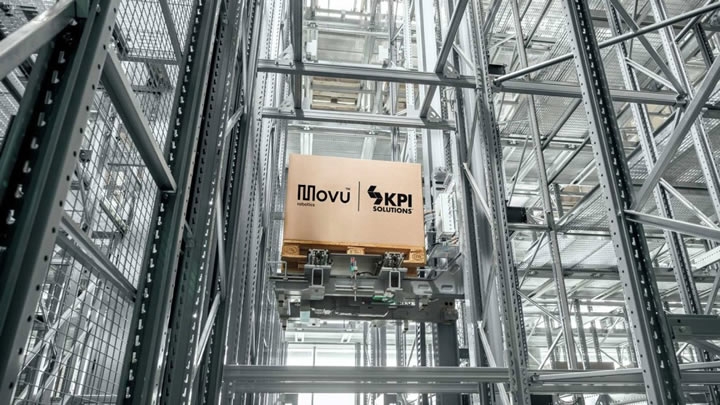The global demand for temperature-controlled logistics continues to grow, and with it comes an increase in operational complexity. These facilities require substantial investment, precise temperature regulation, and the capacity to adapt to market shifts quickly.
 Smart Supply Chain Strategies for Cold Storage: Solving Challenges with Scalable Automation
Smart Supply Chain Strategies for Cold Storage: Solving Challenges with Scalable Automation

Article from | KPI Solutions
Cold storage has become a cornerstone of modern supply chains, supporting critical enterprises that directly impact product safety in the food and pharmaceutical industries. The global demand for temperature-controlled logistics continues to grow, and with it comes an increase in operational complexity. These facilities require substantial investment, precise temperature regulation, and the capacity to adapt to market shifts quickly. The margin for error is small, and the expectations from regulators, customers, and investors are higher than ever.
The Pressures Facing Cold Storage Operators
Leaders in the cold storage sector face an environment where multiple challenges converge. Persistent labor shortages, rising energy costs, space constraints, and complex compliance requirements all put pressure on operations. Conventional approaches that rely heavily on manual processes and fixed infrastructure are no longer enough to keep pace with these demands. Increasingly, operators are turning to automation and intelligent software to create more resilient, efficient, and scalable operations that can deliver consistent performance under changing conditions.
Workforce challenges are among the most persistent. Recruiting and retaining skilled personnel for refrigerated or frozen environments is notoriously difficult. High turnover interrupts continuity, increases training costs, and limits productivity. The physical demands of working in low temperatures reduce efficiency and raise safety concerns. Automation offers a way forward by introducing technologies such as automated storage and retrieval systems and robotic palletizing, which can handle repetitive, high-volume tasks with precision and without fatigue. These systems are engineered to operate reliably in extreme environments, freeing human workers to focus on oversight, quality control, and other value-added responsibilities while reducing the time spent in harsh conditions.
Energy consumption is another critical area where improvement can directly affect profitability. Cold storage facilities rank among the most energy-intensive in the supply chain, with refrigeration systems operating around the clock. Inefficiencies in facility layout, uncoordinated workflows, or outdated equipment can compound costs. Intelligent platforms, including warehouse execution systems, help address these challenges by optimizing task scheduling, limiting unnecessary equipment use, and fine-tuning refrigeration cycles. Access to real-time operational data allows managers to anticipate energy spikes, adjust processes on the fly, and maintain a consistent balance between output and cost control.
Maximizing Space with High-Density Storage Solutions
The cost of space in a cold storage facility is considerably higher than in an ambient warehouse, which makes efficient utilization essential. Every cubic inch carries a cost, and underused or poorly configured storage areas can erode margins. High-density storage systems, combined with automation, allow operators to expand capacity without expanding the physical footprint. This flexibility is especially valuable for meeting seasonal or unexpected surges in demand. By making better use of existing space, operators can defer or even avoid the need for costly new construction, keeping capital available for other strategic investments.
Compliance and traceability are becoming even more important as regulatory oversight increases. Food safety, pharmaceutical integrity, and worker protection regulations require accurate, timely recordkeeping and strict adherence to process standards. Automation reduces the likelihood of human error and creates detailed digital records that can be accessed instantly during inspections or audits. These capabilities not only ensure compliance but also strengthen customer trust, as buyers increasingly expect transparency about how products are stored, handled, and delivered.
Tailoring Automation to Unique Facility Needs
No two cold storage facilities are the same. Variations in layout, product mix, throughput requirements, and business models mean that automation strategies must be tailored to the specific needs of each operation. The ability to integrate new technologies with existing enterprise resource planning and warehouse management systems is critical to ensuring a smooth transition. Scalable, adaptable systems allow organizations to achieve measurable results quickly while preserving the flexibility to expand capabilities as business conditions evolve.
An investment in automation delivers benefits well beyond immediate operational gains. Facilities that implement advanced automation solutions often report higher throughput, improved inventory accuracy, reduced labor costs, and measurable energy savings. These improvements have a direct impact on profitability, enabling organizations to strengthen their competitive position and deliver more value to their customers. In a market where speed, accuracy, and reliability define success, the ability to consistently meet performance targets can determine which companies lead and which fall behind.
Partnering for Long-Term Success
KPI Solutions works alongside cold storage operators to design and implement automation strategies that are built for both current performance and future growth. Our approach combines deep industry expertise with a collaborative process that focuses on aligning operational improvements with broader business objectives. From initial needs assessment to full-scale deployment, we work to ensure that each solution is technically sound, operationally practical, and financially justifiable.
The choices made today will influence market position for years to come. For decision makers in the cold storage sector, automation is more than a technological enhancement. It is a strategic investment in operational excellence, adaptability, and long-term competitiveness. Organizations that take decisive action now will be better positioned to navigate the evolving demands of the cold chain and secure their role as leaders in this vital industry.
Originally written by KPI Solutions.
The content & opinions in this article are the author’s and do not necessarily represent the views of RoboticsTomorrow
Featured Product

